Thermoplastic injection molding process offers a flexible and efficient approach to manufacturing diverse plastic products with minimal cost and lead time. Let's find out with EuroPlas now!
Table of Contents
1. What is thermoplastic molding?
2. Applications of thermoplastic molding
3. The Advantages and Disadvantages of thermoplastic molding
4. Ideal material to use
5. The differences between thermoplastic molding and thermoset molding
6. About European Plastic Company
1. What is thermoplastic molding?
Thermoplastic molding commonly referred to as plastic injection molding, is the method used to manufacture plastic parts and products in massive quantities. The special feature of this technique is its capability to repeatedly melt and solidify thermoplastic materials while retaining their original properties. Consequently, this process typically produces plastic merchandise with high precision, stable physical properties and a smooth glossy exterior.
 Typical structure of Thermoplastic Molding Machine
Typical structure of Thermoplastic Molding Machine
Thermoplastic molding typically commences by melting thermoplastic materials in the form of pellets or granules inside an injection molding machine that operates under elevated temperature and pressure. Subsequently, the molten plastic transforms into a uniform liquid state, ensuring homogeneity of the material.
Once the plastic is in its molten state, it is injected into the mold through the force exerted by the large screw system. The molds utilized for this purpose are typically constructed from steel and meticulously designed to create the desired shape. Once the entire liquid resin has been injected into the mold, it undergoes a cooling process facilitated by a cooling system embedded within the mold, as a result, the plastic solidifies and takes shape.
To obtain the final product, the mold holding the frozen part is opened, allowing for the separation and ejection of the solidified plastic. This marks the conclusion of a multi-step process. A plastic injection molding system generally automates and controls this procedure, which helps ensure gentle and precise impact to avoid any potential damage to the product.
Find out more details about thermoplastic injection molding at Iqsdirectory!
2. Applications of thermoplastic molding
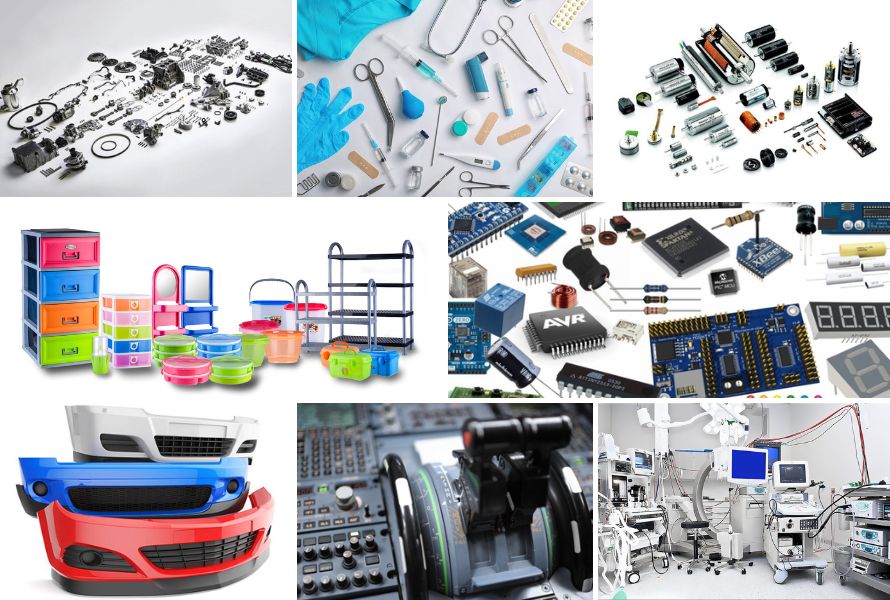 Applications of thermoplastic molding
Applications of thermoplastic molding
Thermoplastic molding is extensively applied across multiple industries due to its adaptability and effectiveness. Within the automotive sector, it is utilized for producing both interior and exterior components like dashboards, headlights, and front bumpers. By using this technique, automakers can enhance productivity while delivering durable and visually appealing products to customers.
Thermoplastic molding holds a significant position in the medical industry for its crucial role in producing medical devices of consistent and high quality. Components such as endotracheal tubes, surgical instruments and various medical devices demand an extremely high level of precision. Thermoplastic molding enables the creation of medical products that comply with rigorous safety and effectiveness standards, thereby enhancing the overall quality of patient healthcare.
Thermoplastic molding is a common occurrence in our day-to-day lives, playing a crucial role in the manufacturing of consumer goods like household appliances, equipment, and packaging materials. It also holds significant importance in the electronics industry for producing enclosures, connectors, and components.
Additionally, thermoplastic molding finds applications in aerospace and construction sectors. Its ability to achieve remarkable precision, durability, and cost-effectiveness has made it the preferred choice in numerous industries.
3. The Advantages and Disadvantages of thermoplastic molding
Thermoplastic molding offers numerous benefits that make it a preferred choice across various industries. Firstly, this process offers immense design flexibility, enabling the creation of intricate shapes and sizes.
Secondly, thermoplastic molding is economically viable due to its capacity for mass production, resulting in reduced production costs. Furthermore, Thermoplastic molding ensures high output quality, delivering finished merchandise that meet dimensional and material specifications accurately.
Additionally, this production process is environmentally friendly as it utilizes recyclable materials and minimizes waste generation. In summary, the benefits of thermoplastic molding encompass adaptability, cost-effectiveness, superior product quality, and environmental sustainability.
 The benefits of thermoplastic molding
The benefits of thermoplastic molding
On the other hand, alongside its exceptional advantages, thermoplastic molding also presents certain inherent weaknesses. One of the most significant drawbacks of thermoplastic molding is the relatively high initial investment cost associated with tooling and mold design. This process necessitates a profound level of specialized expertise in order to produce precise molds and tools.
While the eco-friendliness of thermoplastic molding is widely recognized, it is crucial to exercise caution when choosing input materials and avoiding the utilization of detrimental chemicals and additives during production. Additionally, a constraint emerges from the selection of raw materials since thermoplastic molds can only operate optimally with compatible substances.
Moreover, if any unexpected issues arise during the molding process, addressing them can prove to be intricate, requiring a significant investment of time, effort, and financial resources. In general, thermoplastic molding provides abundant benefits to both manufacturers and consumers, nonetheless, it remains crucial to thoroughly evaluate the inherent limitations of this procedure and establish suitable measures to mitigate them.
4. Ideal material to use
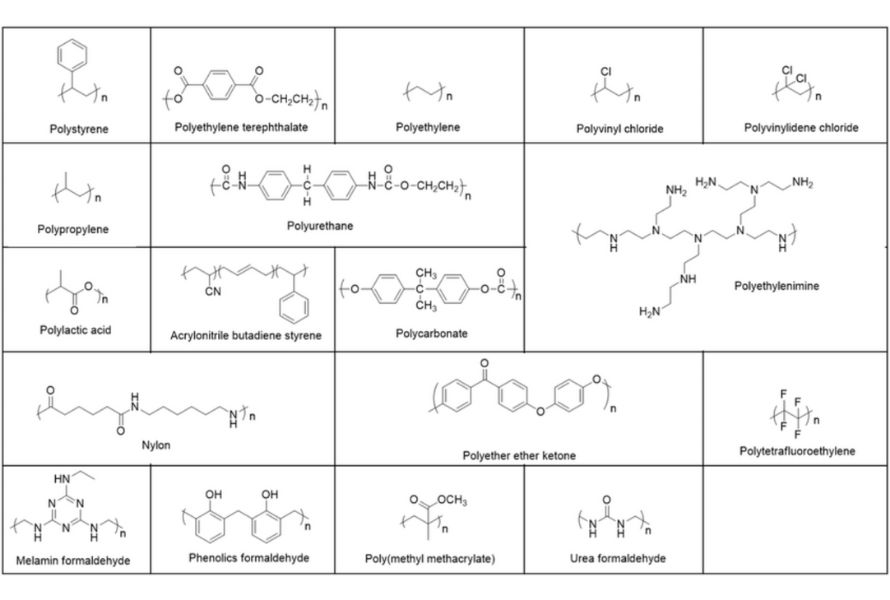 What’s ideal material for thermoplastic molding?
What’s ideal material for thermoplastic molding?
Thermoplastic molding is a common manufacturing process that uses various types of plastic materials. Some commonly employed materials for this technique include polyethylene (PE), polypropylene (PP), polystyrene (PS), polyvinyl chloride (PVC), acrylonitrile butadiene styrene (ABS), and polyethylene terephthalate (PET). These materials possess unique properties that render them suitable for different applications.
PE is renowned for its strength and resistance to chemicals, making it ideal for applications like containers and piping systems. PP exhibits exceptional heat resistance and finds extensive use in packaging, automotive components, and household appliances. PS is available in both rigid and porous forms and is commonly utilized for disposable utensils, packaging materials, and insulation. PVC is well-known for its insulating properties, making it a favorable choice for cables and wiring.
ABS is a robust material known for its ability to withstand impacts, making it well-suited for applications in electronics, auto parts, and toys. Lastly, PET is a transparent and strong material commonly employed for beverage bottles and food containers. In summary, these materials share the common characteristic of being easily melted, shaped, solidified, and transformed into a wide range of products.
5. The differences between thermoplastic molding and thermoset molding
When it comes to injection molding, thermoplastic molding and thermoset molding are the two commonly favored processes. Despite having similar names and some similarities, they possess distinct characteristics and find applications in diverse fields.
| Thermoplastic molding |
Thermoset molding |
| During the manufacturing process, the plastic material is melted and injected into the mold |
During production, cold material is injected into hot mold |
| Can be remolded and recycled |
Can’t be remolded or reshaped |
| 100% reversible, as no chemical bonding takes place during the process |
Forms a permanent chemical bond |
| Thermoplastics result in accurate, flexible, and pleasing surface finishes |
Comparatively difficult to surface finish |
| Requires high temperature and high pressure |
Does not requires high temperature and high pressure |
| The production process includes injection molding, extrusion and blow molding |
The production process includes compression, transfer and casting |
Think of the products made from thermoplastic molding like cheese and thermoset molding like a burger patty. Cheese comes in a variety of different shapes but when melted it can take on a new form. Once cooked, a burger patty can’t be melted to take on a new form.
6. About European Plastic Company
BiONext is a specific type of bio-engineering plastic produced from biodegradable base plastics and carefully chosen additives to suit the specific needs of end products. It finds extensive use in various industries including but not limited to blowing biofilm, food packaging, agricultural film, injection molding, and extrusion processes for creating items such as spoons, forks, laminations, and plates.
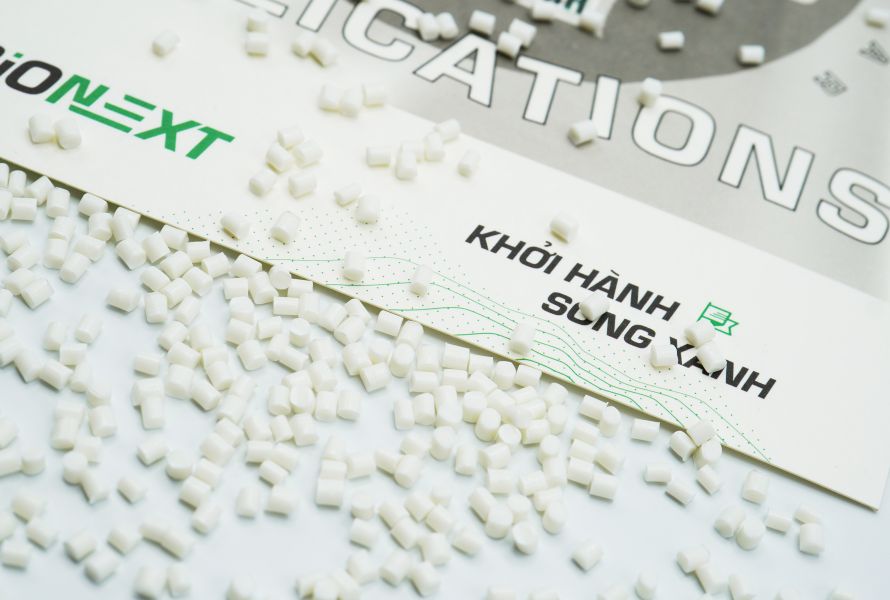 Bioplastic Compound
Bioplastic Compound
Color masterbatch is a commonly used technique for coloring plastics, which involves combining a conventional plastic base with pigments and suitable additives in the form of masterbatch granules. EuroPlas provides a diverse selection of premium pigments that deliver precise, steadfast, and durable colors.
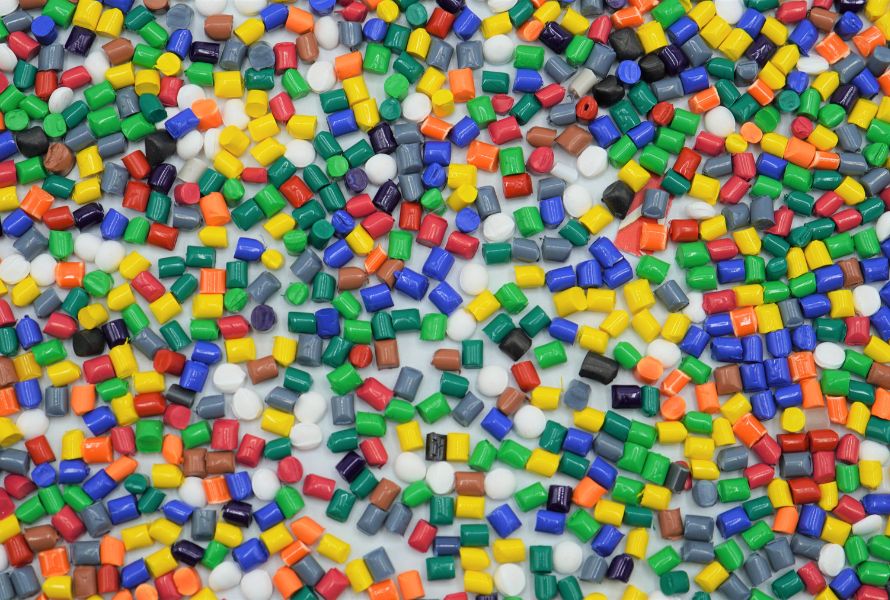 Color masterbatch
Color masterbatch
Plastic is susceptible to the influences of environmental conditions and its own inherent factors throughout processing and use. To enhance production efficiency and product quality, EuroPlas presently offers an array of 11 fundamental additives including anti-UV, anti-aging, flame retardant, anti-static, and more.
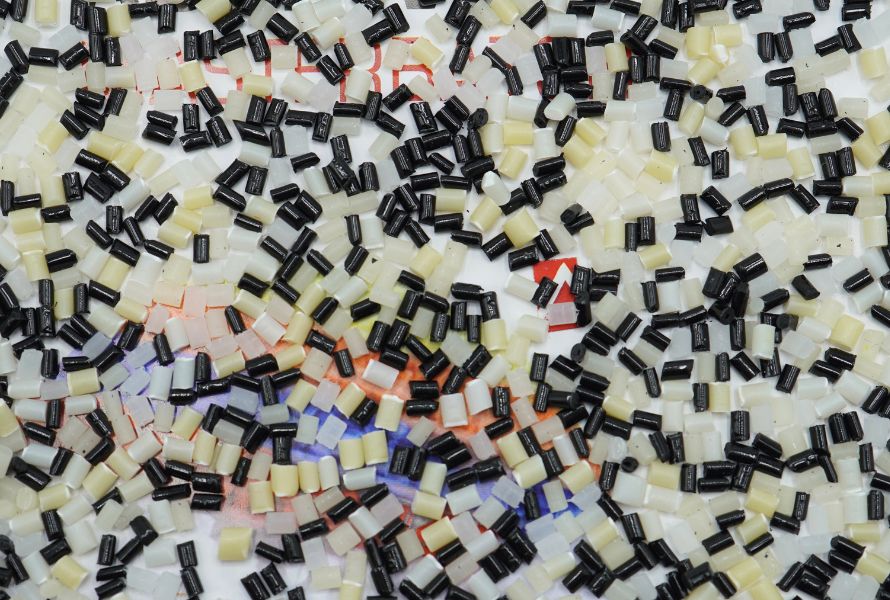 Plastic Additives
Plastic Additives
Compound engineering plastics find extensive application in various industries that demand a high level of technical expertise. This includes sectors like automotive and motorcycle parts, household electrical appliances, electrical engineering, electronic components, and office equipment. EuroPlas products are designed with exceptional attributes such as chemical resistance, impact resistance, wear resistance, and easy structural adjustment to meet rigorous specifications.
.jpg) Engineering Plastic Compound
Engineering Plastic Compound
The filler masterbatch comprises a mixture of conventional plastic materials (PP, PE, HIPS, etc.) combined with CaCO3 stone powder and suitable additives, presented as masterbatch particles. The primary objective of the filler masterbatch is to substitute a portion of the main plastic material, facilitating cost reduction during production and ultimately enhancing the competitiveness of the final products.
.jpg) Filler masterbatch
Filler masterbatch
BiOMates is a range of plastic fillers produced using biodegradable base resins and appropriate additives tailored to meet the specific requirements of the end product. These bio fillers possess all the exceptional advantages of filler masterbatch while also being biodegradable within 12 months after use, making them highly environmentally friendly.
.jpg) Bio filler
Bio filler
At Europlas, we place great importance on delivering exceptional plastic products that are created with meticulous attention to detail and precise craftsmanship. Our team consists of dedicated professionals with high levels of expertise, committed to providing excellent customer service to guarantee your complete satisfaction.
Discover the unique features of Europlas products and enjoy the unmatched quality and reliability that our esteemed customers depend on. Take the opportunity to contact us today and explore our wide range of products, finding the perfect plastic solution that precisely meets your needs.
You can find additional valuable information right here!